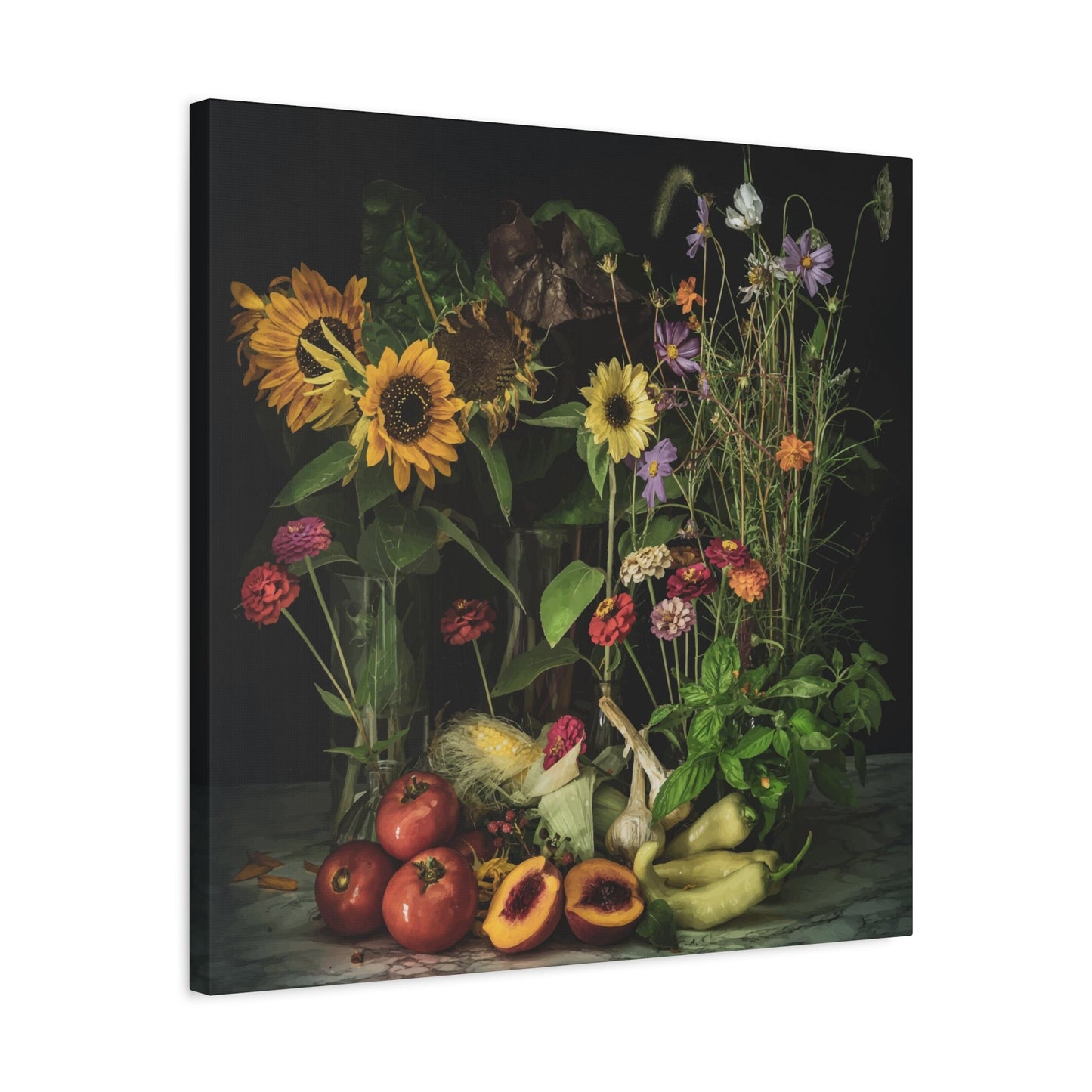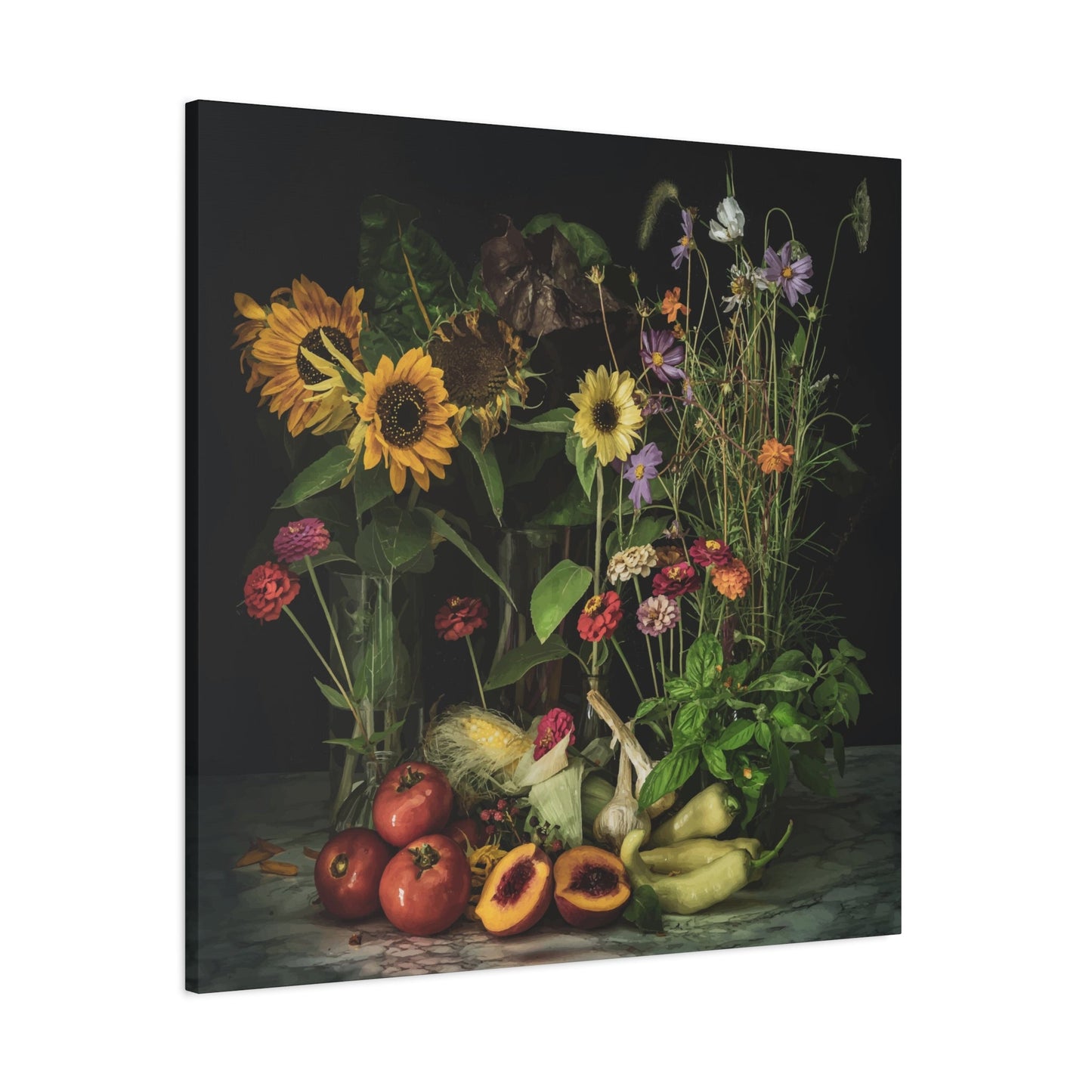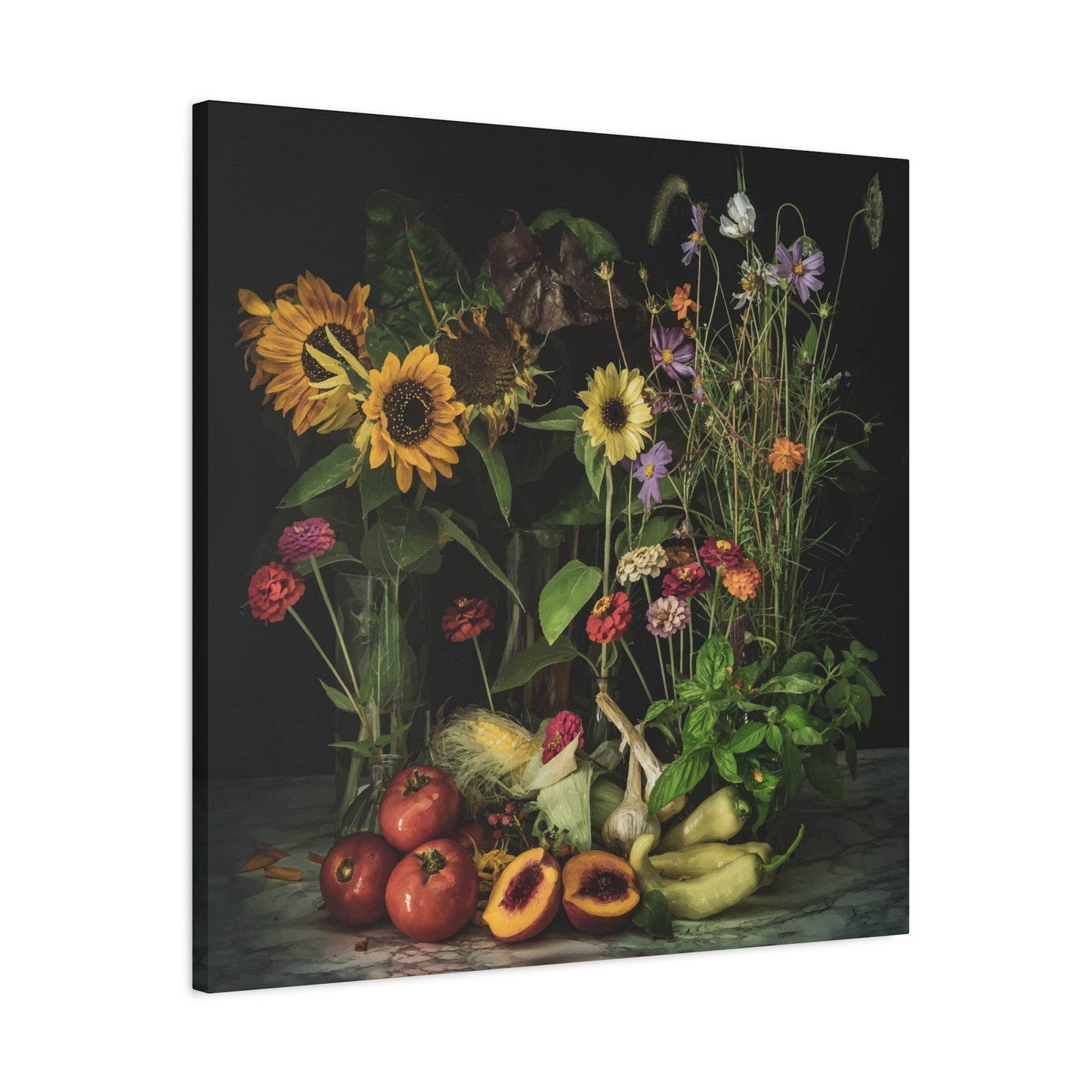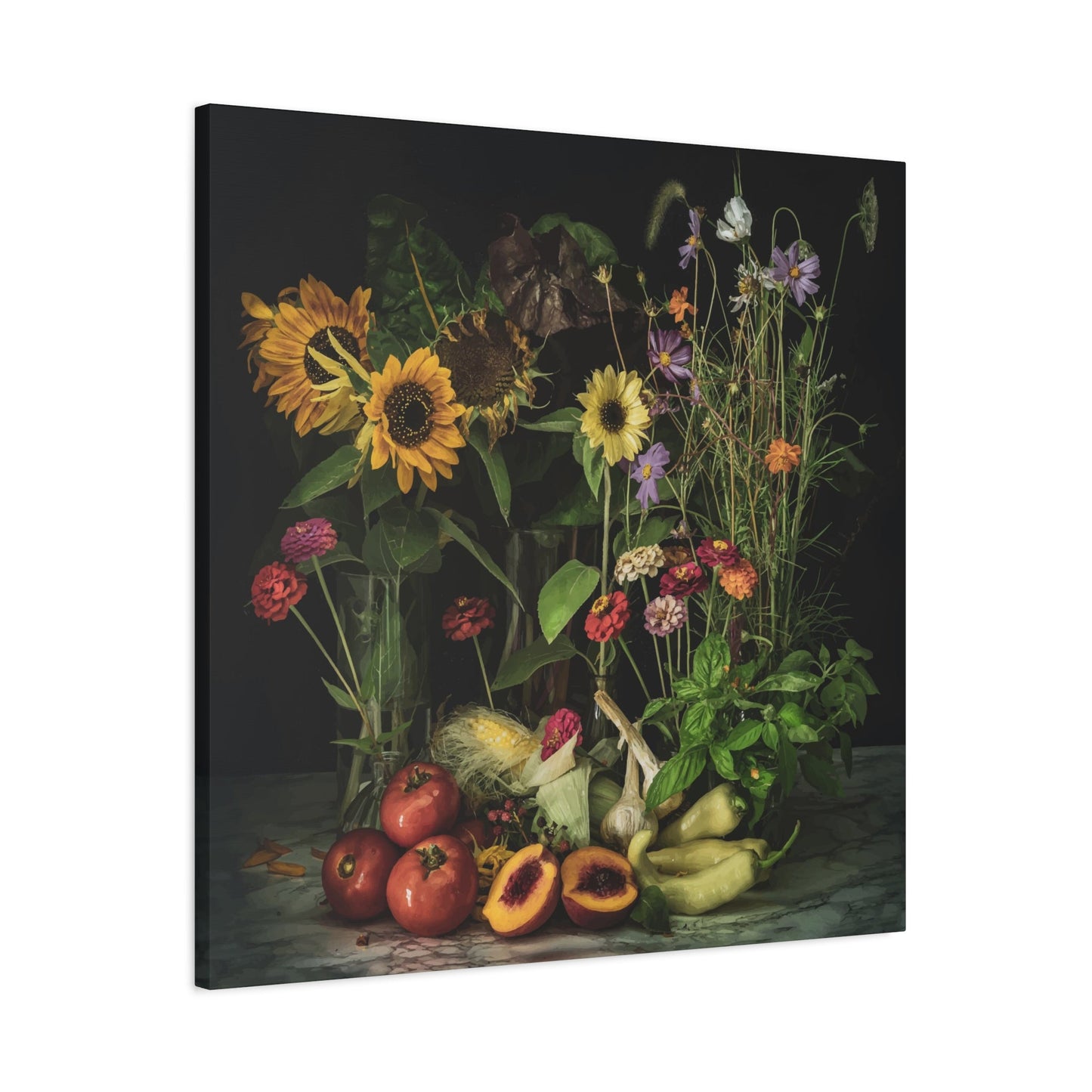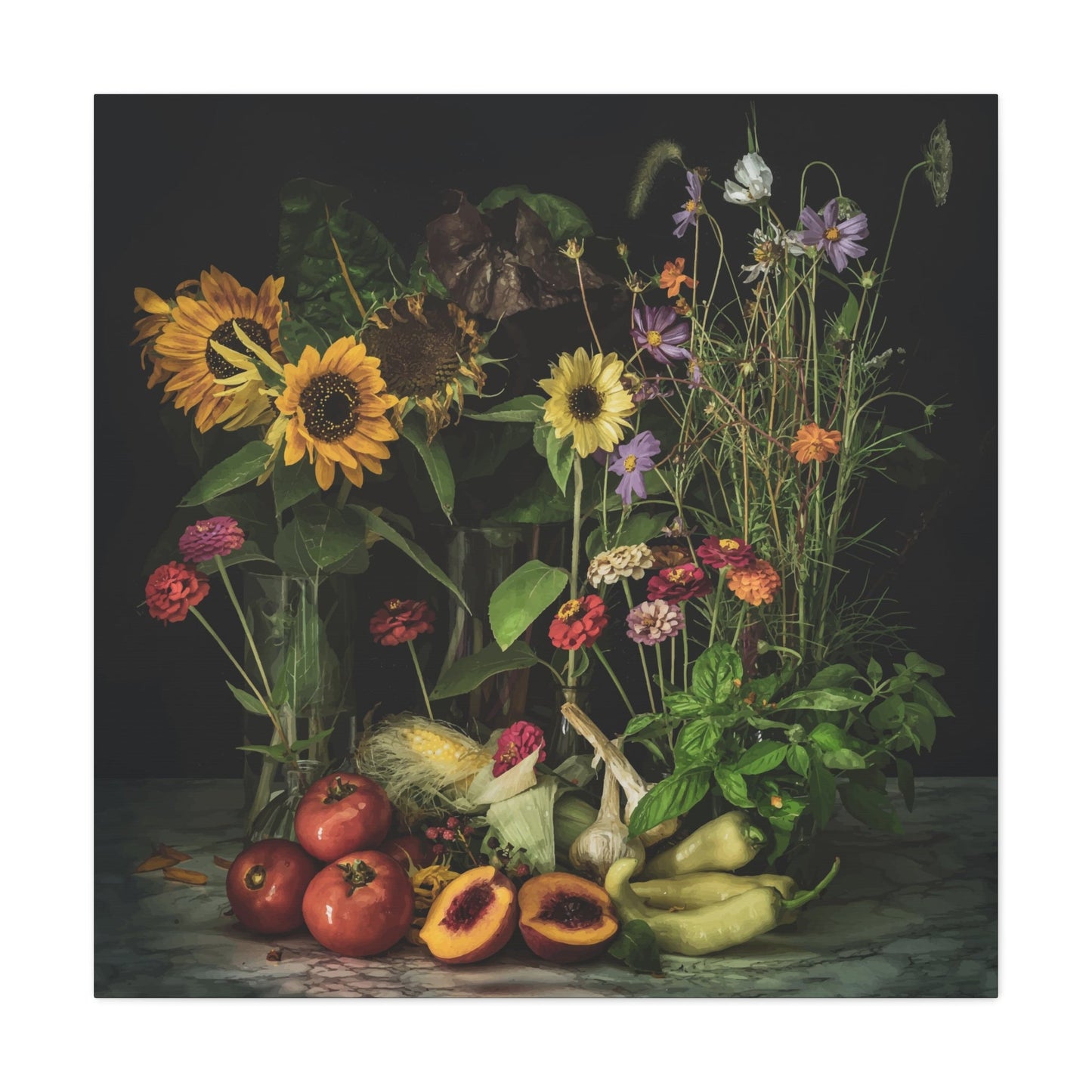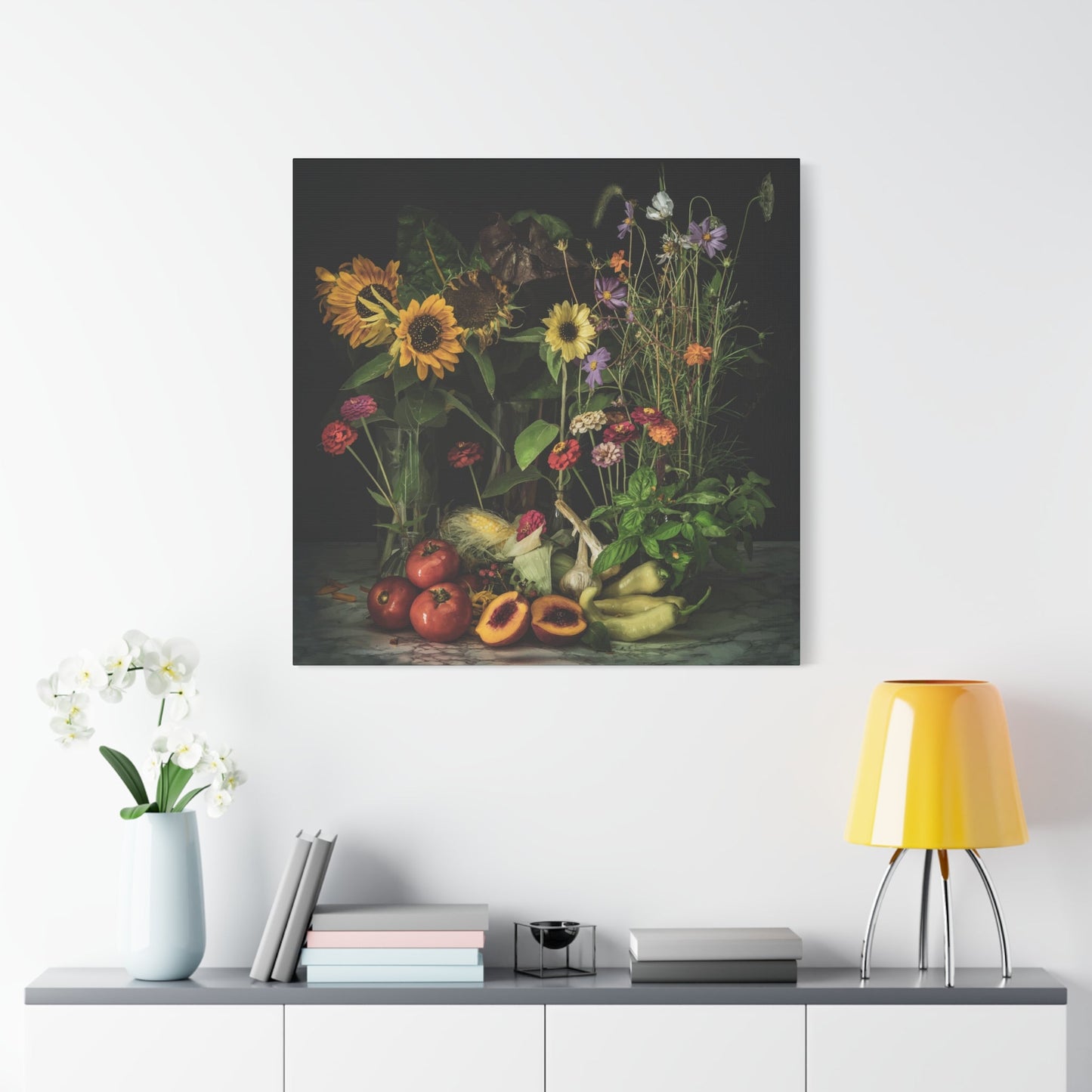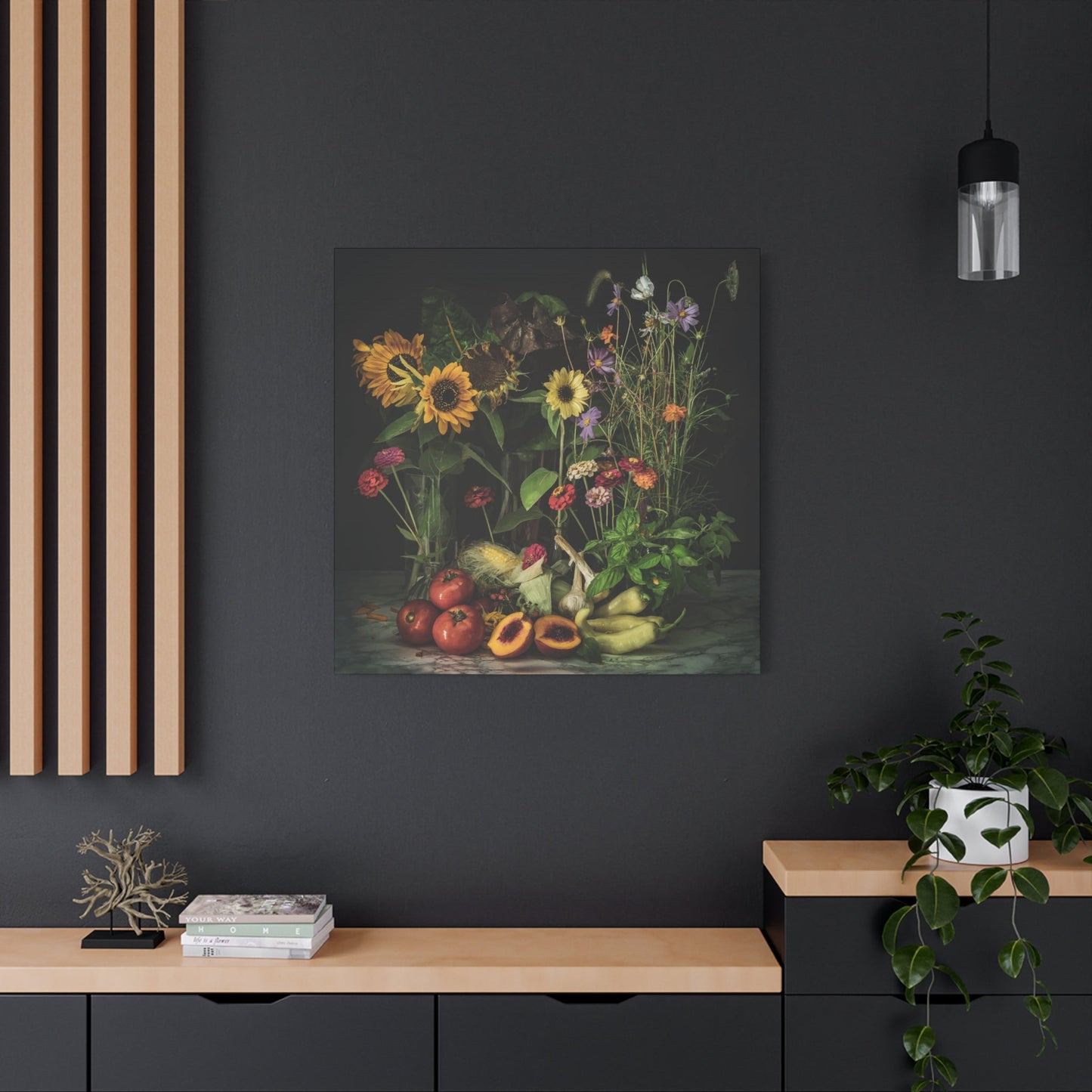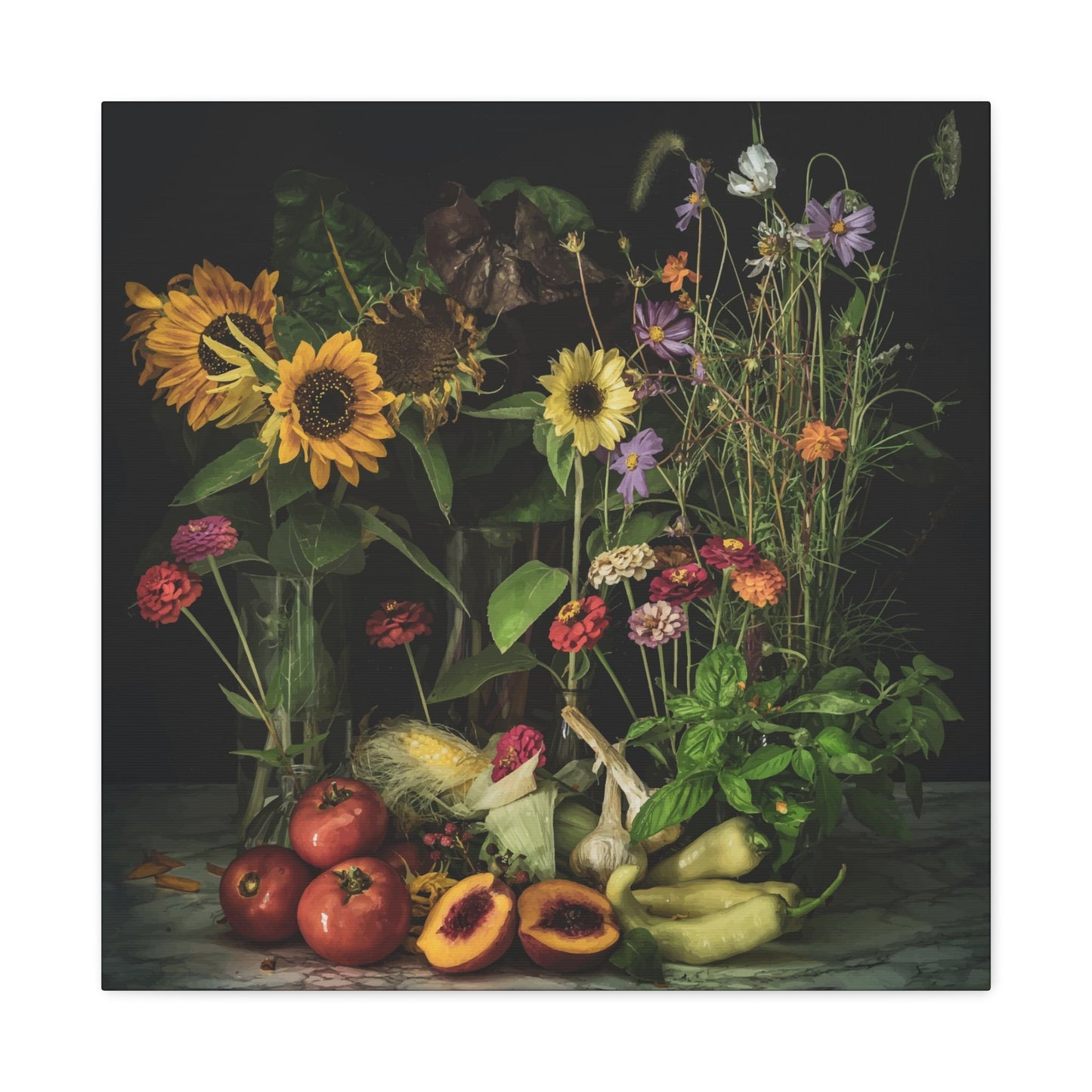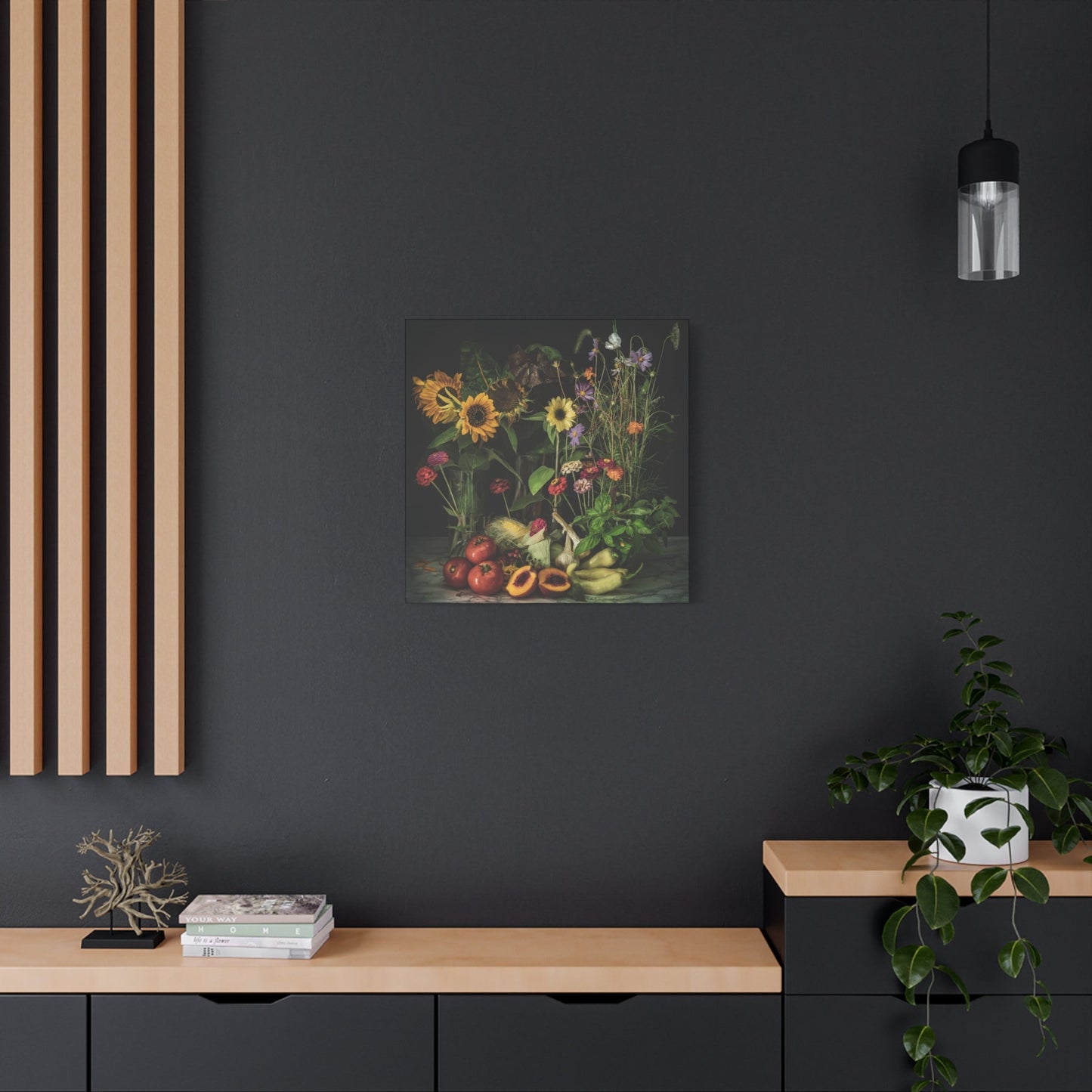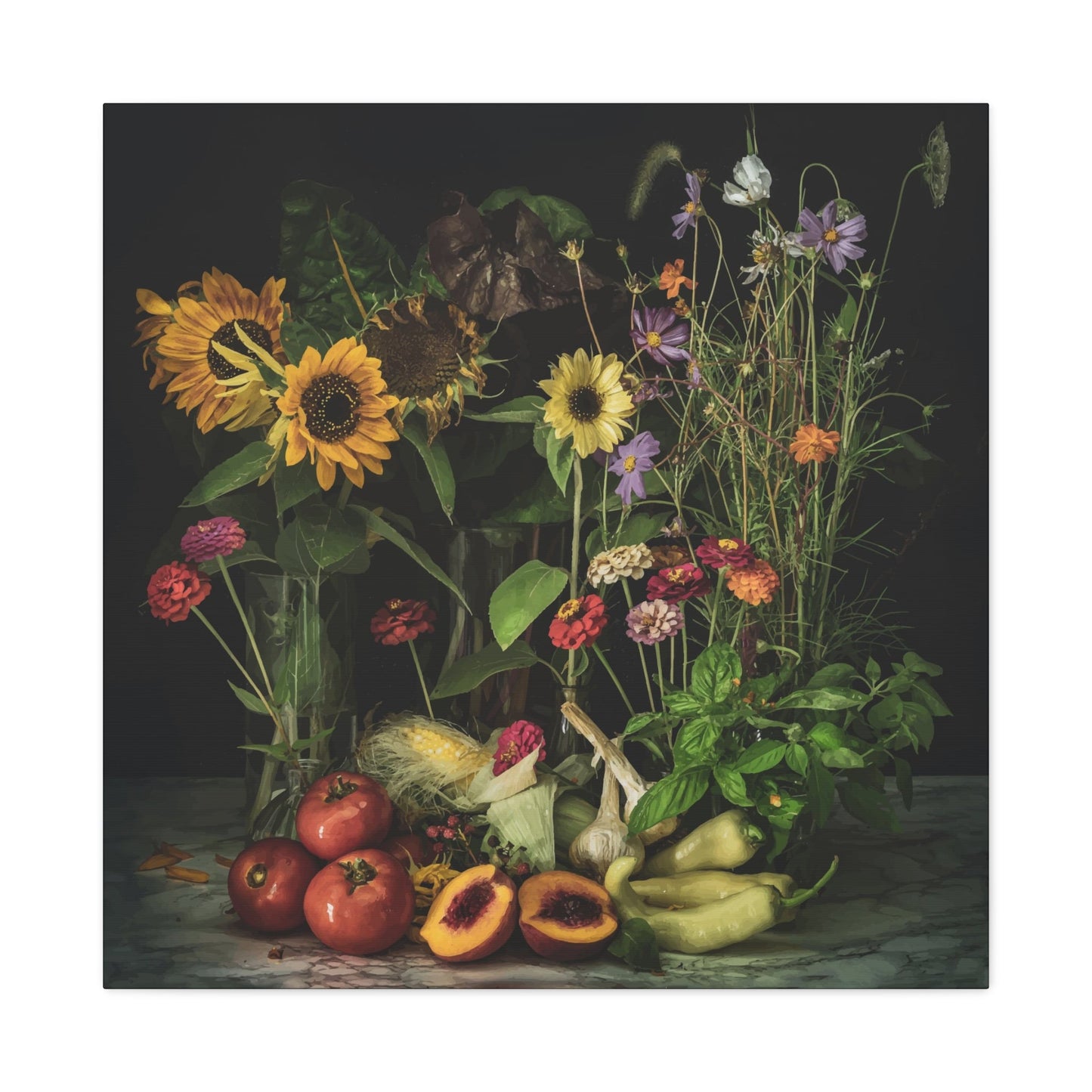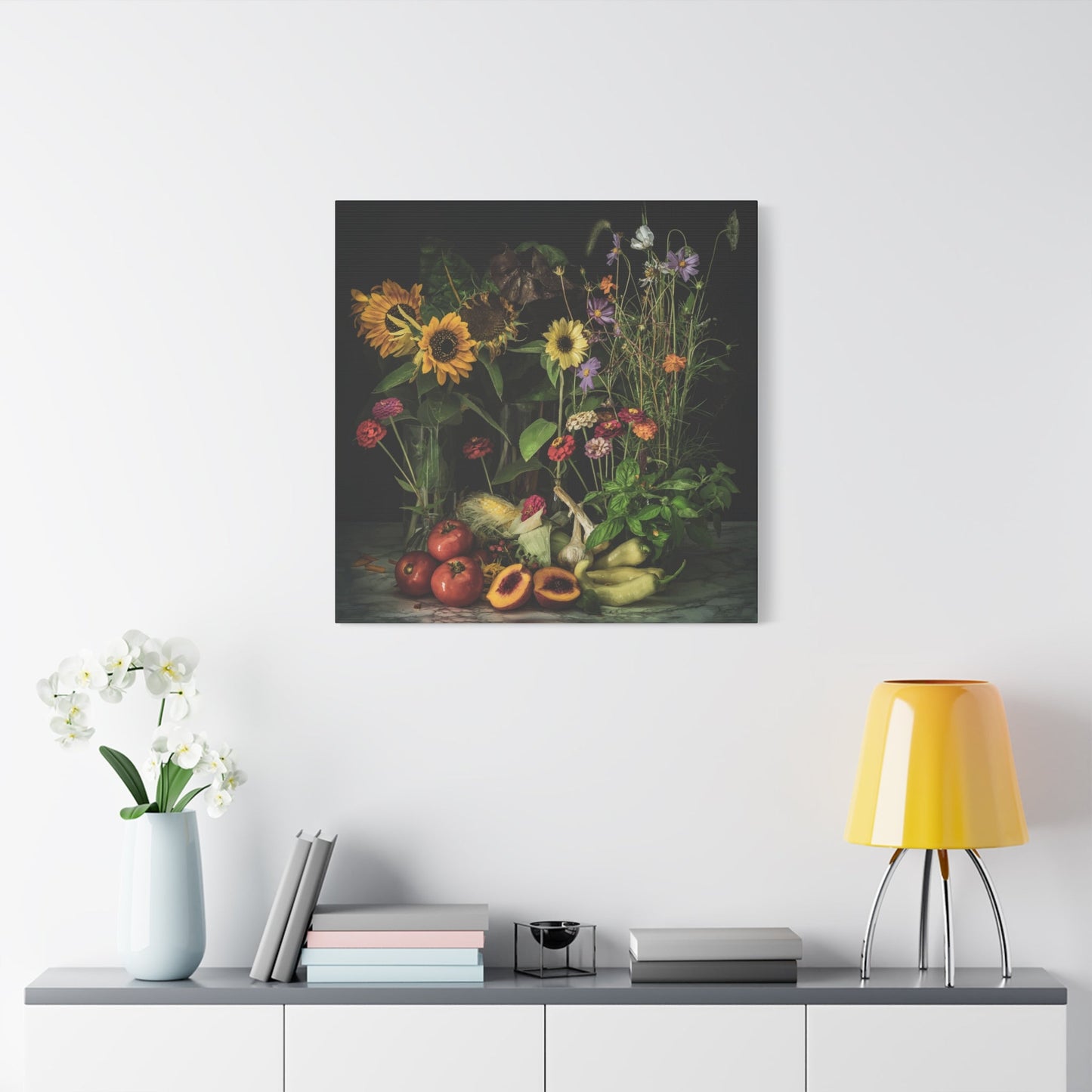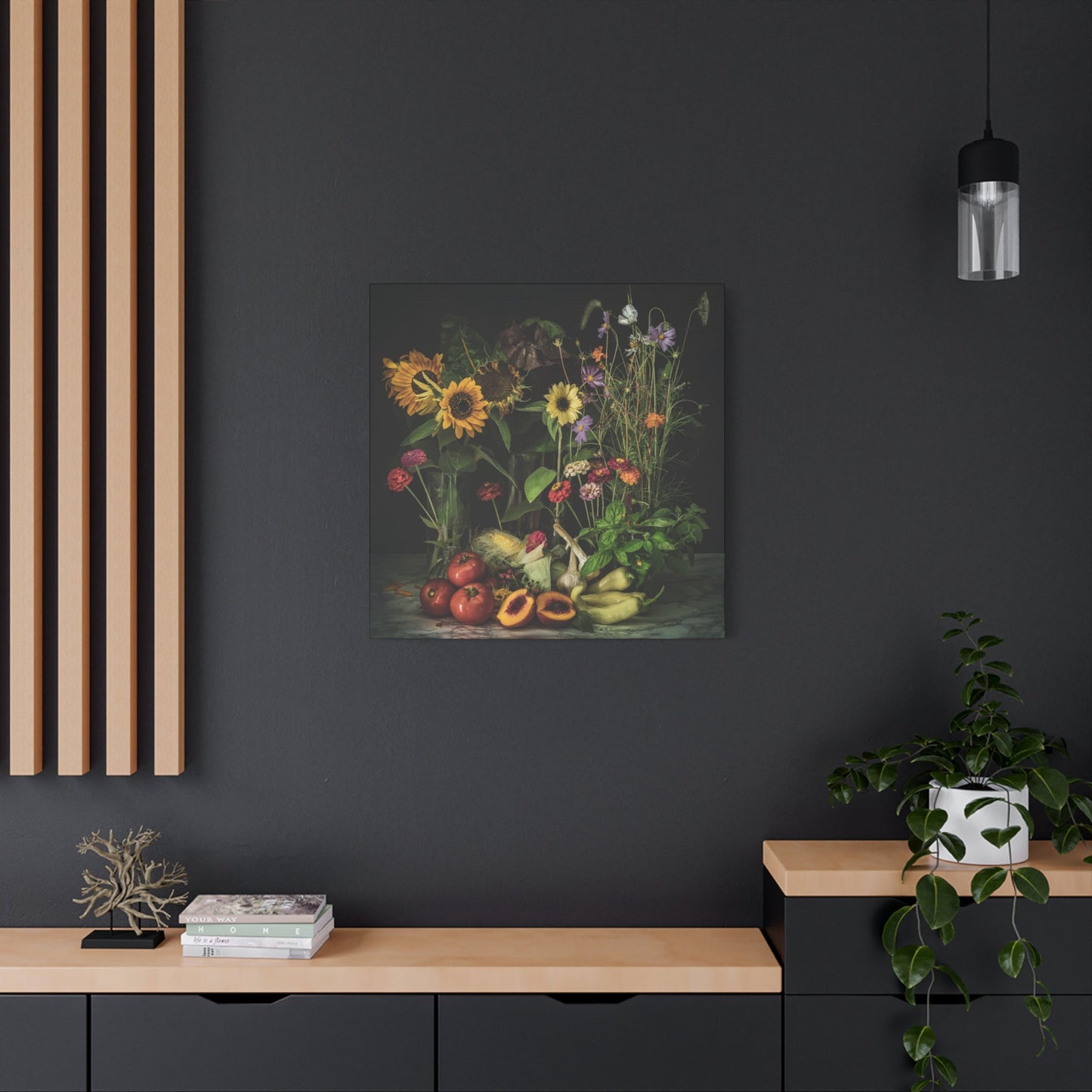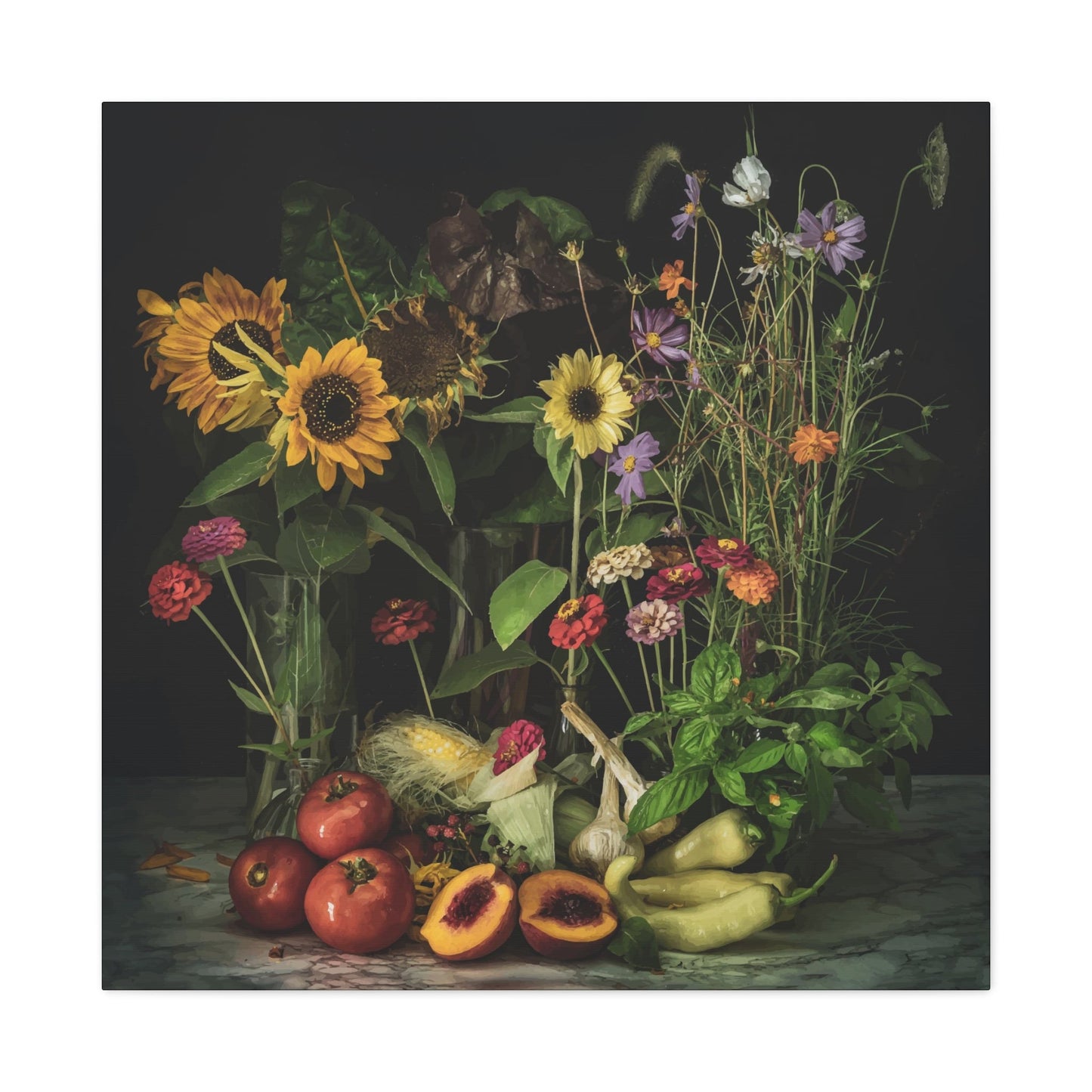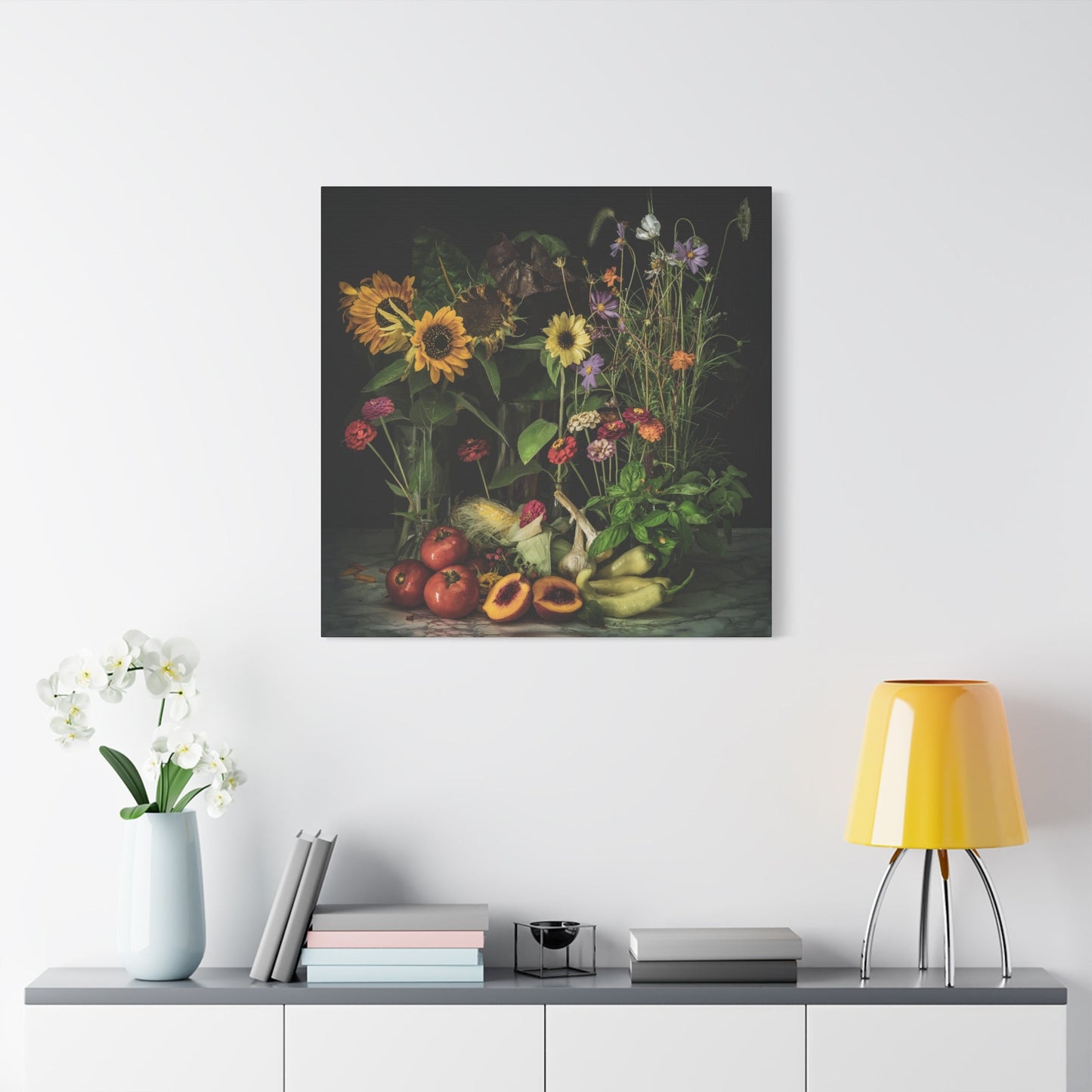How to Create Your Own DIY Fruit Wall Art at Home
Decorating your home or business with artistic fruit-themed pieces has become an increasingly popular trend that brings natural beauty, vibrant colors, and a sense of freshness to any environment. Whether you're looking to create a welcoming atmosphere in your kitchen, add personality to your dining area, or establish an inviting ambiance in your commercial establishment, fruit-themed artwork offers endless possibilities for creative expression and aesthetic enhancement.
The appeal of fruit imagery in decorative art stems from its universal recognition, symbolic meanings, and inherent beauty. Fruits represent abundance, prosperity, health, and vitality across many cultures, making them perfect subjects for artistic representation. From classical still-life paintings featuring opulent arrangements of seasonal produce to contemporary minimalist designs highlighting single fruit forms, this genre of artwork continues to evolve while maintaining its timeless appeal.
In today's design landscape, fruit-themed artwork serves multiple purposes beyond mere decoration. It can establish color schemes, create focal points, enhance themes related to healthy living, and even influence mood and appetite. The versatility of fruit imagery allows it to complement various decorating styles, from rustic farmhouse aesthetics to sleek modern environments, making it an accessible choice for diverse preferences and budgets.
The growing interest in sustainable living, organic food, and wellness culture has further contributed to the popularity of fruit-themed decorative elements. Many homeowners and business owners are drawn to artwork that reflects their values and lifestyle choices, and fruit imagery naturally aligns with themes of natural living, environmental consciousness, and healthy eating habits.
Handcrafted DIY Fruit-Themed Artistic Projects
Creating your own fruit-themed artwork offers numerous advantages, including complete creative control, cost-effectiveness, and the satisfaction of displaying personally crafted pieces. DIY projects allow you to customize colors, sizes, and styles to perfectly match your existing decor while creating unique pieces that reflect your personal taste and artistic vision.
One of the most accessible DIY approaches involves creating simple fruit silhouettes using canvas boards and acrylic paints. Begin by selecting your favorite fruits and sketching their basic shapes onto canvas surfaces. Choose colors that complement your room's existing palette, or opt for bold, vibrant hues that create striking contrast. Layer different shades to create depth and dimension, starting with lighter base colors and gradually adding darker tones for shadows and definition.
Collage techniques offer another creative avenue for DIY fruit artwork. Gather colorful magazine pages, fabric scraps, decorative papers, and other materials in fruit-appropriate colors. Cut or tear these materials into organic shapes resembling fruit forms, then arrange and layer them on canvas or heavy paper backgrounds. This technique creates textural interest and allows for experimentation with different materials and finishes.
Stenciling provides a more structured approach to DIY fruit artwork, perfect for those who prefer precise, clean lines. Create or purchase fruit-shaped stencils and use them with spray paints, brushes, or sponges to create repeated patterns or individual fruit images. This technique works particularly well for creating series of matching pieces or for adding fruit motifs to existing furniture or decorative objects.
Mixed media approaches combine various techniques and materials to create complex, layered compositions. Incorporate elements like pressed flowers, leaves, or actual fruit peels (properly dried and preserved) alongside painted or drawn elements. Add texture with modeling paste, sand, or fabric, creating three-dimensional effects that enhance visual interest and tactile appeal.
Photography-based DIY projects offer modern alternatives to traditional painting techniques. Create stunning macro photographs of fruit textures, colors, and forms, then print and frame them in creative arrangements. Experiment with different lighting conditions, backgrounds, and compositions to capture unique perspectives on familiar subjects. Black and white photography can create sophisticated, artistic interpretations of fruit subjects.
Abstract interpretations allow for maximum creative freedom while maintaining fruit-inspired themes. Focus on capturing the essence of fruits through color relationships, organic forms, and natural patterns rather than literal representations. This approach works particularly well for modern or contemporary decorating schemes where subtle suggestions are preferred over obvious imagery.
Seasonal DIY projects can refresh your artwork throughout the year, featuring different fruits as they come into season. Create rotating displays that celebrate spring berries, summer stone fruits, autumn apples and pears, or winter citrus varieties. This approach keeps your decorative elements fresh and relevant while providing ongoing creative projects throughout the year.
Watercolor Techniques for Fruit-Themed Artwork
Watercolor painting offers unique advantages for creating fruit-themed artwork, including luminous color quality, organic flow, and the ability to capture the translucent, fresh qualities that make fruits so visually appealing. The fluid nature of watercolors naturally complements the organic forms and vibrant colors found in fruit subjects, making this medium particularly well-suited for this type of artistic expression.
Beginning watercolor artists should start with simple fruit forms like apples, oranges, or pears, which offer clear, recognizable shapes and straightforward color schemes. Practice basic watercolor techniques like wet-on-wet blending, graduated washes, and color mixing using fruit subjects as inspiration. These fundamental skills will serve as building blocks for more complex compositions and techniques.
Layering transparent watercolor washes creates depth and luminosity in fruit paintings. Start with light, diluted colors for base tones, allowing each layer to dry completely before adding subsequent washes. This technique builds color intensity gradually while maintaining the transparent quality that makes watercolors so distinctive. Pay attention to light sources and shadow patterns, using darker washes to define form and create three-dimensional effects.
Color mixing becomes particularly important when working with fruit subjects, as capturing accurate fruit colors often requires combining multiple pigments. Practice mixing warm and cool versions of each color family to achieve realistic fruit tones. For example, apples might require combinations of reds, yellows, and greens, with variations in temperature to suggest different varieties and ripeness levels.
Texture techniques add interest and realism to watercolor fruit paintings. Salt applied to damp paint creates granular textures suitable for citrus peels or rough-skinned fruits. Splattering with a toothbrush or stiff brush creates speckled effects perfect for strawberries or kiwi interiors. Masking fluid preserves white areas for highlights and reflected light, essential for creating the glossy surfaces of many fruits.
Botanical illustration techniques bring scientific accuracy and detailed observation to fruit watercolors. Study actual fruit specimens carefully, noting color variations, surface textures, and structural details. Create detailed sketches before beginning to paint, mapping out highlight and shadow areas. This approach results in artwork suitable for educational settings or for those who appreciate precise, realistic representation.
Loose, impressionistic watercolor approaches emphasize mood and color relationships over detailed representation. Focus on capturing the essential character of fruits through confident brushstrokes and bold color choices. This technique works well for creating series of related paintings or for achieving contemporary, artistic effects that complement modern decorating schemes.
Experimental techniques push the boundaries of traditional watercolor painting. Try using salt, alcohol, or other additives to create unique textures and effects. Experiment with unconventional tools like sponges, plastic wrap, or spray bottles to apply paint in unexpected ways. These techniques can result in dynamic, contemporary interpretations of fruit subjects that stand out as unique artistic statements.
Background treatments play crucial roles in watercolor fruit paintings. Simple graduated washes provide clean, uncluttered backgrounds that allow fruit subjects to dominate compositions. More complex backgrounds might include suggested environmental elements like wooden surfaces, fabric textures, or garden settings that enhance the narrative quality of the artwork.
Fresh and Vibrant Fruit Artwork for Modern Homes
Contemporary homes benefit greatly from fresh, vibrant fruit artwork that brings natural energy and color into living environments. Modern fruit-themed pieces serve as excellent focal points while supporting current trends toward biophilic design, which emphasizes connections between indoor environments and natural elements.
Large-scale fruit photography printed on metal or acrylic substrates creates striking contemporary statements. These modern printing techniques produce vivid colors and sharp details that work particularly well in minimalist or industrial decorating schemes. Choose dramatic close-ups of fruit textures, cross-sections, or abstract compositions that emphasize color and form over literal representation.
Digital art techniques offer unlimited possibilities for creating fresh, contemporary fruit artwork. Vector illustrations with clean lines and bold colors work well in modern settings, while digital paintings can achieve effects impossible with traditional media. Consider commissioning custom digital artwork that incorporates specific color schemes or stylistic elements to match your home's aesthetic perfectly.
Geometric interpretations of fruit forms bridge the gap between natural subjects and contemporary design sensibilities. Abstract compositions that suggest fruit shapes through angular forms, color relationships, or pattern elements appeal to those who prefer subtle references over obvious imagery. These pieces work particularly well in professional or sophisticated residential settings.
Mixed media contemporary pieces combine traditional artistic techniques with modern materials and approaches. Incorporate elements like metallic leafing, textured mediums, or unconventional substrates to create artwork that feels current and innovative. These pieces often serve as conversation starters and artistic focal points in contemporary homes.
Color psychology plays an important role in selecting fresh fruit artwork for modern homes. Vibrant oranges and yellows energize kitchens and breakfast areas, while cooler greens and purples create calming effects in bedrooms or reading areas. Understanding color relationships helps create cohesive decorating schemes that support desired moods and activities.
Scale considerations become particularly important in contemporary settings, where clean lines and uncluttered compositions are valued. Large, single fruit images often work better than busy, complex compositions in modern environments. Consider the relationship between artwork size and wall space, furniture scale, and room proportions when selecting or creating fresh fruit pieces.
Contemporary framing options enhance the modern appeal of fruit artwork. Sleek metal frames, floating mounts, or frameless presentations maintain clean, uncluttered appearances that complement contemporary decorating schemes. Consider non-traditional presentation methods like metal standoffs, acrylic boxes, or magnetic mounting systems for truly modern effects.
Integrating Fruit Art with Contemporary Decorating Styles
Successfully incorporating fruit-themed artwork into modern decorative schemes requires understanding how natural imagery can complement contemporary design principles. The key lies in selecting or creating pieces that emphasize the sophisticated aspects of fruit subjects while avoiding overly literal or traditional interpretations that might clash with modern aesthetics.
Color coordination becomes crucial when mixing fruit art with contemporary furnishings and accessories. Analyze your existing color palette and choose fruit artwork that either harmonizes with established colors or provides strategic accent colors that enhance the overall scheme. Monochromatic fruit art can integrate seamlessly into neutral modern environments, while bold, colorful pieces can serve as dynamic focal points.
Material selections in both artwork and framing should align with contemporary design preferences for clean, sophisticated finishes. Consider fruit artwork printed on metal, glass, or acrylic substrates that reflect light and create modern, high-tech appearances. These materials often complement contemporary furnishings better than traditional canvas or paper presentations.
Composition principles from modern design apply equally to fruit artwork selection. Clean, simple compositions with plenty of negative space often work better in contemporary settings than complex, busy arrangements. Single fruit subjects or minimal groupings typically integrate more successfully than traditional still-life arrangements with multiple elements.
Abstract and stylized interpretations of fruit subjects often bridge the gap between natural imagery and contemporary aesthetics more effectively than realistic representations. Look for artwork that captures the essence of fruits through color, form, or pattern while maintaining the sophisticated simplicity valued in modern design.
Lighting considerations affect how fruit artwork appears in contemporary settings. Modern homes often feature dramatic lighting designs that can enhance or detract from artwork depending on color choices and surface finishes. Consider how natural and artificial light will interact with your chosen fruit pieces throughout different times of day.
Placement strategies should reflect contemporary design principles of intentional, uncluttered arrangements. Rather than grouping multiple fruit pieces together in traditional gallery wall formations, consider strategic single placements that create focal points without overwhelming clean modern lines. This approach maintains the sophisticated simplicity characteristic of contemporary decorating.
Technology integration offers modern alternatives to traditional artwork display methods. Digital picture frames can rotate through collections of fruit imagery, providing variety and seasonal changes without physical artwork changes. This approach particularly appeals to those who appreciate the flexibility and customization possibilities that technology provides.
Classic and Antique Fruit Prints for Traditional Settings
Vintage fruit prints bring timeless elegance and historical character to traditional decorating schemes. These pieces, whether authentic antiques or high-quality reproductions, offer sophisticated alternatives to contemporary fruit artwork while maintaining the natural appeal and symbolic meanings associated with fruit imagery.
Botanical illustration traditions from the 18th and 19th centuries produced exceptional fruit artwork that combines scientific accuracy with artistic beauty. These detailed, precisely rendered images were originally created for educational and documentation purposes but have become highly valued as decorative art. Look for reproductions of famous botanical illustrators' work or seek authentic vintage pieces from antique dealers and auction houses.
European still-life painting traditions offer another source of classic fruit artwork. Dutch Golden Age painters, French Impressionists, and other historical movements produced countless fruit-themed paintings that remain popular as decorative prints. These pieces bring cultural sophistication and artistic pedigree to traditional home environments while providing the natural beauty associated with fruit subjects.
Lithographic printing techniques from the Victorian era created distinctive fruit artwork with characteristic color palettes and stylistic approaches. These prints often feature formal compositions and muted colors that work particularly well in traditional decorating schemes. Seek out original lithographs or high-quality reproductions that capture the unique aesthetic qualities of historical printing methods.
Frame and presentation choices significantly impact how vintage fruit prints integrate into traditional decorating schemes. Period-appropriate frames with ornate details, gold leafing, or carved elements enhance the historical character of vintage pieces. Consider grouping related prints in matching frames to create cohesive arrangements that reflect traditional gallery wall approaches.
Provenance and authenticity add value and interest to vintage fruit print collections. Research the history of pieces when possible, documenting artists, publication dates, and original purposes. This information enhances appreciation for the artwork while providing interesting conversation topics for guests who admire your collections.
Preservation considerations become important when displaying authentic vintage fruit prints. Protect valuable pieces from direct sunlight, humidity fluctuations, and other environmental factors that could cause deterioration. Use museum-quality matting materials and UV-protective glazing when framing original pieces to ensure long-term preservation.
Reproduction quality varies significantly among vintage fruit print copies. Seek out high-resolution reproductions printed on appropriate papers with accurate color reproduction. Quality reproductions can provide the aesthetic benefits of vintage fruit prints at more accessible price points while avoiding preservation concerns associated with original pieces.
Styling considerations help vintage fruit prints achieve maximum decorative impact in traditional settings. Group prints by artist, subject matter, or time period to create cohesive arrangements. Consider the relationship between print sizes, frame styles, and wall space to achieve balanced, visually pleasing displays that enhance rather than overwhelm traditional room designs.
Budget-Conscious Fruit Artwork Solutions
Creating beautiful fruit-themed decorative displays doesn't require significant financial investment. Numerous approaches can achieve stunning results while working within modest budgets, making fruit artwork accessible to everyone regardless of economic constraints.
Digital downloads represent one of the most economical approaches to acquiring fruit artwork. Many artists offer high-resolution digital files for immediate download and home printing. This option provides access to professional artwork at fraction of traditional costs while allowing customization of sizes and paper choices to meet specific needs and preferences.
Print-on-demand services offer another cost-effective solution for obtaining fruit artwork. These services provide professional printing of digital artwork on various substrates including canvas, metal, and specialty papers. While slightly more expensive than home printing, these services often produce superior quality results that rival traditionally purchased artwork.
Thrift store and secondhand sources frequently yield excellent fruit artwork at extremely low prices. Estate sales, garage sales, and consignment shops often contain vintage fruit prints, paintings, and decorative objects that can be incorporated into artwork displays. This approach requires patience and regular searching but can result in unique finds at bargain prices.
Library and museum reproduction programs provide access to high-quality prints of famous fruit artwork from their collections. Many institutions offer reproduction services or maintain gift shops with affordable print options. This approach provides access to museum-quality artwork while supporting cultural institutions.
Seasonal clearance sales at home goods stores, frame shops, and art retailers offer opportunities to acquire fruit artwork at reduced prices. Time purchases to coincide with end-of-season sales, inventory clearances, and holiday promotions to maximize savings on decorative art purchases.
DIY matting and framing significantly reduce the overall cost of displaying artwork. Learn basic framing techniques and purchase materials in bulk to achieve professional-looking results at home. Thrift stores often provide inexpensive frames that can be painted or modified to match desired aesthetic preferences.
Artist collaboration and commission work can provide original fruit artwork at reasonable prices. Many emerging artists welcome commission opportunities and may offer competitive pricing for original pieces. Local art schools, community centers, and online platforms connect buyers with artists willing to create custom fruit-themed artwork within specified budgets.
Group purchasing and bulk buying reduce per-piece costs when acquiring multiple fruit artwork pieces. Coordinate with friends, neighbors, or online communities to purchase art prints, framing materials, or commission services together. This approach often qualifies for volume discounts while reducing individual expenses.
Rental and rotation programs allow enjoyment of various fruit artwork without permanent purchase commitments. Some galleries and art rental services offer programs that allow customers to display artwork for specified periods before returning or purchasing pieces. This approach provides variety and flexibility while spreading costs over time.
Dining Room Enhancement with Fruit-Themed Artwork
Dining rooms provide ideal settings for fruit-themed artwork, where the natural associations between food, hospitality, and gathering create perfect thematic alignments. Fruit imagery in dining environments enhances appetite appeal, creates welcoming atmospheres, and supports conversations about food, cooking, and healthy living.
Scale and proportion considerations become particularly important in dining room artwork selection. Large dining rooms can accommodate substantial fruit paintings or photograph collections that serve as dramatic focal points, while smaller dining areas benefit from more modest pieces that enhance rather than overwhelm the eating environment. Consider the relationship between artwork size and dining table dimensions, ceiling height, and overall room proportions.
Color psychology plays a significant role in dining room artwork selection. Warm fruit colors like oranges, reds, and yellows tend to stimulate appetite and create energetic dining atmospheres suitable for family meals and entertaining. Cooler fruit colors like greens and purples create more sophisticated, calming environments appropriate for formal dining experiences.
Lighting interactions with fruit artwork significantly impact dining room ambiance. Consider how both natural and artificial lighting will affect artwork appearance throughout different meal times. Artwork with reflective elements or light colors can help brighten dining areas, while darker pieces create more intimate, sophisticated atmospheres suitable for evening dining.
Thematic coordination between fruit artwork and dining room functions enhances overall design coherence. Consider seasonal fruit displays that change throughout the year, reflecting available produce and holiday themes. This approach keeps dining room decor fresh and relevant while providing ongoing opportunities for creative expression and seasonal celebration.
Multiple artwork arrangement strategies work well in dining rooms, where wall space often allows for gallery wall formations or series presentations. Create cohesive displays using multiple fruit pieces with related subjects, colors, or artistic styles. Consider arranging pieces to create visual flow around the dining room, guiding attention while maintaining balanced compositions.
Integration with existing dining room elements requires careful consideration of furniture styles, textile patterns, and decorative accessories. Fruit artwork should complement rather than compete with other design elements, creating harmonious environments that support comfortable dining experiences. Consider how artwork will interact with tablescapes, lighting fixtures, and window treatments.
Seasonal rotation possibilities make dining rooms excellent locations for changing fruit artwork displays. Create collections of pieces representing different seasons or harvest times, rotating displays throughout the year to maintain visual interest and seasonal relevance. This approach provides ongoing decorative variety while celebrating natural cycles and seasonal abundance.
Conversation starter potential makes fruit artwork particularly valuable in dining room settings, where social interaction is a primary function. Choose pieces with interesting stories, unique artistic techniques, or unexpected interpretations that provide natural topics for dinner conversation. This approach enhances the social aspects of dining while creating memorable experiences for guests.
Tropical Fruit Artwork for Exotic Ambiance
Tropical fruit imagery brings exotic energy and vibrant colors to any environment, creating associations with vacation destinations, warm climates, and adventurous experiences. These themes work particularly well in homes located in cooler climates, where tropical fruit artwork provides year-round reminders of sunny, warm environments.
Pineapple symbolism has deep historical roots representing hospitality, welcome, and luxury, making pineapple artwork particularly appropriate for entryways, guest rooms, and entertaining areas. Traditional pineapple motifs work well in colonial or traditional decorating schemes, while contemporary interpretations suit modern environments seeking exotic touches without overwhelming sophistication.
Coconut, mango, and papaya imagery evokes tropical paradise associations that work well in bedrooms, bathrooms, or relaxation areas where escapist themes enhance the desired mood. These fruits offer rich color palettes and interesting textural opportunities that translate well into various artistic media and presentation formats.
Color combinations in tropical fruit artwork often feature bold, saturated hues that can energize neutral decorating schemes or complement existing tropical-inspired elements. Consider how tropical fruit colors will interact with existing furnishings, textiles, and architectural elements to achieve balanced, cohesive design effects.
Cultural associations with tropical fruits can add depth and meaning to artwork selections. Research the cultural significance of different tropical fruits in various societies to choose pieces that align with desired symbolic meanings or personal experiences. This approach adds intellectual interest to decorative choices while creating more meaningful connections with artwork.
Photography-based tropical fruit artwork captures the lustrous surfaces, vibrant colors, and exotic appeal of these subjects with particular effectiveness. High-resolution macro photography reveals intricate details and textures that showcase the natural beauty of tropical fruits while creating striking visual impact suitable for contemporary settings.
Abstract interpretations of tropical fruit forms allow for bold color experimentation while maintaining thematic connections to exotic imagery. These approaches work particularly well in modern or eclectic decorating schemes where suggestive rather than literal imagery is preferred. Focus on capturing essential tropical fruit characteristics through color relationships and organic forms.
Seasonal considerations affect how tropical fruit artwork functions in different climates and room orientations. These pieces can provide welcome warmth during cold months while potentially feeling overwhelming during hot summer periods. Consider room orientation, natural light exposure, and seasonal usage patterns when incorporating tropical fruit artwork into home environments.
Mixed media approaches combine tropical fruit imagery with other exotic elements like palm fronds, tropical flowers, or beach scenes to create comprehensive tropical themes. This approach works well for creating immersive environments that transport viewers to tropical destinations through coordinated decorative elements.
Promoting Wellness Through Fruit-Themed Decorative Art
Health-conscious living trends have made fruit-themed artwork increasingly popular as visual reminders of nutritional goals, wellness commitments, and healthy lifestyle choices. These pieces serve dual purposes as decorative elements and motivational tools that support positive behavioral changes and mindset shifts.
Kitchen placement of inspirational fruit artwork creates daily reminders of healthy eating goals while enhancing cooking and food preparation environments. Choose pieces that showcase fresh, appealing fruits to encourage healthy food choices and cooking motivation. This approach supports wellness goals through environmental design and visual reinforcement.
Exercise and fitness area enhancement through fruit artwork creates motivating environments that reinforce healthy lifestyle messages. Images of energizing fruits like citrus varieties or antioxidant-rich berries provide visual inspiration for maintaining active lifestyles while creating attractive, purposeful decorative elements in home gyms or exercise rooms.
Color therapy principles suggest that different fruit colors can influence mood and energy levels. Energizing orange and yellow fruits may boost motivation and positivity, while calming green fruits create peaceful, balanced environments. Understanding these relationships helps create supportive environments that align with personal wellness goals and desired emotional states.
Educational aspects of fruit artwork can support family health education by showcasing variety, seasonal availability, and nutritional benefits of different fruits. Choose pieces that highlight lesser-known fruits or demonstrate the beauty of seasonal variety to encourage exploration of new healthy foods and expansion of dietary diversity.
Mindful eating promotion through carefully selected fruit artwork creates environments that encourage appreciation for natural foods and conscious consumption choices. Beautiful fruit imagery can slow eating pace, increase food appreciation, and support mindful consumption practices that enhance both physical and psychological well-being.
Seasonal wellness themes align fruit artwork with natural cycles and seasonal availability of fresh produce. Rotate displays to reflect seasonal fruit availability, creating ongoing reminders of nature's bounty while supporting seasonal eating practices that often provide optimal nutrition and environmental benefits.
Children's health education benefits from appealing fruit artwork that makes healthy foods seem attractive and desirable. Choose colorful, engaging pieces for children's rooms or family areas to create positive associations with fruits and support family wellness goals through environmental design and visual messaging.
Stress reduction potential of nature-based imagery, including fruit artwork, supports overall wellness through environmental design. Natural subjects can reduce stress levels, lower blood pressure, and create calming effects that contribute to overall health and well-being beyond direct nutritional messaging.
Gallery Wall Creation with Fruit-Themed Prints
Creating cohesive gallery walls using fruit-themed prints requires careful planning, design principles, and attention to visual balance. Successful fruit print gallery walls combine multiple pieces to create unified displays that showcase collections while maintaining visual interest and compositional harmony.
Planning and layout preparation begins with measuring wall spaces and creating paper templates representing each artwork piece. Experiment with different arrangements on the floor before committing to wall placement, considering visual flow, spacing relationships, and overall composition balance. This preparation prevents costly mistakes and ensures successful final results.
Color coordination strategies help unify diverse fruit prints within gallery wall arrangements. Choose pieces with shared color elements, similar tonal qualities, or complementary color relationships to create visual cohesion despite different subjects or artistic styles. Consider how background colors, mat choices, and frame finishes contribute to overall color harmony.
Size variation and placement create visual interest while maintaining balance in fruit print gallery walls. Combine different sized pieces strategically, using larger pieces as anchor points and smaller pieces to fill spaces and create rhythm. Avoid perfectly symmetrical arrangements in favor of balanced asymmetry that feels more dynamic and natural.
Frame consistency or strategic variation affects gallery wall success. Matching frames create formal, unified appearances suitable for traditional settings, while varied frame styles can create eclectic, personalized effects appropriate for casual or contemporary environments. Consider room style, existing furnishings, and desired aesthetic when making frame decisions.
Spacing guidelines ensure professional-looking gallery wall arrangements. Maintain consistent spacing between pieces, typically 2-3 inches for small to medium pieces and slightly more for larger works. Consider the viewing distance and room scale when determining spacing, with larger rooms often benefiting from slightly increased spacing between pieces.
Central focal points anchor successful gallery wall compositions. Choose one larger or particularly striking fruit print as the central element, then arrange surrounding pieces to support and complement this focal point. This approach prevents gallery walls from appearing scattered or unfocused while creating clear visual hierarchy.
Theme development within fruit print gallery walls can follow various organizational principles including color families, fruit types, artistic styles, or seasonal themes. Consistent thematic approaches create more cohesive, purposeful displays that feel intentional rather than random collections of unrelated pieces.
Installation techniques ensure secure, level placement of multiple pieces within gallery wall arrangements. Use appropriate hanging hardware for each piece weight, measure carefully to ensure level installation, and consider professional installation for valuable or complex arrangements. Proper installation prevents damage while ensuring lasting attractive displays.
Professional Framing Techniques for Fruit Artwork
Proper framing significantly enhances the presentation and longevity of fruit artwork while protecting valuable pieces from environmental damage. Understanding professional framing principles helps achieve museum-quality results that showcase artwork effectively while providing appropriate preservation.
Mat selection and cutting requires attention to color coordination, proportion, and preservation qualities. Choose acid-free, archival quality mats that won't discolor artwork over time. Mat colors should complement artwork while providing appropriate contrast to enhance visibility. Consider multiple mat layers for added depth and visual interest, particularly with smaller pieces that benefit from additional visual weight.
Frame style selection depends on artwork characteristics, room decor, and personal preferences. Traditional fruit artwork often benefits from classic wood frames with warm finishes, while contemporary pieces may work better with sleek metal frames or minimalist presentations. Consider how frame choices will interact with existing room elements and overall decorating schemes.
Glass and glazing options affect both artwork protection and visual presentation. Regular glass provides basic protection at economical prices, while museum glass eliminates reflections and provides superior UV protection for valuable pieces. Acrylic glazing offers lightweight, shatter-resistant alternatives suitable for high-traffic areas or children's rooms.
Mounting techniques ensure proper artwork positioning while preventing damage from contact with glazing or backing materials. Use acid-free mounting boards and appropriate attachment methods that allow for natural expansion and contraction without creating stress points. Avoid permanent mounting techniques that could damage artwork if removal becomes necessary.
Backing and support systems protect artwork from environmental factors while maintaining proper positioning within frames. Use acid-free backing boards, dust covers, and appropriate moisture barriers to create protective environments that preserve artwork condition over extended periods. Consider climate conditions and room locations when selecting backing materials.
Hardware selection ensures secure wall mounting while protecting both artwork and wall surfaces. Choose hanging systems appropriate for artwork weight, wall construction, and desired positioning. Consider adjustable hanging systems that allow for easy repositioning or seasonal rotation of displayed pieces.
Conservation considerations become particularly important for valuable or irreplaceable fruit artwork. Use only archival quality materials, avoid direct contact between artwork and glazing, and maintain stable environmental conditions to prevent deterioration. Consider professional conservation consultation for particularly valuable or historically significant pieces.
Maintenance and care procedures extend frame and artwork life while maintaining attractive presentations. Regular dusting, appropriate cleaning techniques, and periodic inspection for damage or deterioration help preserve both artistic and monetary value. Document any changes in artwork condition and address problems promptly to prevent further damage.
Gift Ideas: Fruit Artwork for Food Enthusiasts
Fruit-themed artwork makes excellent gifts for culinary enthusiasts, health-conscious individuals, and anyone who appreciates natural beauty and vibrant colors. These gifts combine aesthetic appeal with personal relevance, making them thoughtful choices for various occasions and recipients.
Personalization possibilities enhance the gift value of fruit artwork by reflecting recipient interests, preferences, and lifestyle choices. Consider commissioning custom pieces featuring favorite fruits, family orchard varieties, or fruits with special significance to the recipient's cultural background or personal experiences. This approach creates unique, meaningful gifts that demonstrate thoughtful consideration.
Kitchen and dining area suitability makes fruit artwork particularly appropriate for food lovers who spend significant time cooking, entertaining, or enjoying meals. Choose pieces sized and styled appropriately for kitchen environments, considering factors like humidity, temperature fluctuations, and food preparation activities that might affect artwork condition.
Educational components add value to fruit artwork gifts for those interested in botany, nutrition, or culinary history. Vintage botanical prints, heritage variety illustrations, or artwork featuring unusual fruits can satisfy curiosity while providing beautiful decorative elements. Include information about featured fruits, artists, or historical context to enhance educational value.
Seasonal and holiday themes make fruit artwork suitable for various gift-giving occasions. Spring artwork featuring berries and early fruits works well for Easter or Mother's Day gifts, while autumn pieces showcasing apples and pears suit Thanksgiving or harvest-themed occasions. Consider timing gifts to coincide with seasonal fruit availability or personal significance.
Skill level considerations help match DIY fruit artwork kits or supplies with recipient abilities and interests. Beginner-friendly watercolor sets or simple canvas painting kits work well for those new to artistic pursuits, while advanced supplies or challenging project kits suit experienced artists seeking new creative directions.
Budget flexibility allows fruit artwork gifts to accommodate various price ranges while maintaining quality and thoughtfulness. Digital art downloads provide economical options, while original commissioned pieces or vintage prints offer premium gift possibilities. Consider grouping smaller pieces or including complementary items like frames or art supplies to enhance perceived value.
Presentation and packaging enhance the gift experience and demonstrate care in selection and preparation. Consider coordinating gift wrap with artwork themes, including explanatory notes about artist or subject significance, or presenting artwork with complementary items like gourmet fruit preserves or cooking tools that reinforce culinary themes.
Long-term appreciation potential makes fruit artwork particularly valuable as gifts that continue providing enjoyment over extended periods. Choose pieces with timeless appeal that won't quickly become dated, and consider how artwork might integrate into evolving home decorating schemes or changing lifestyle needs.
Seasonal Fruit Collections for Year-Round Appeal
Creating seasonal fruit artwork collections provides opportunities for ongoing decorative variety while celebrating natural cycles and seasonal abundance. This approach keeps home environments fresh and relevant throughout the year while providing structured frameworks for building comprehensive fruit artwork collections.
Spring fruit collections feature early season varieties like strawberries, rhubarb, and spring berries that represent renewal, growth, and fresh beginnings. Light, fresh colors and delicate compositions work well for spring pieces, creating optimistic, energizing displays that celebrate the end of winter and anticipation of abundant growing seasons ahead.
Summer collections showcase peak season abundance with stone fruits, berries, and tropical varieties that represent warmth, leisure, and peak growing conditions. Bold, saturated colors and lush compositions capture summer's energy and abundance, creating vibrant displays that energize home environments during the season of outdoor living and fresh produce availability.
Autumn collections feature harvest fruits like apples, pears, and late-season varieties that represent maturity, abundance, and preparation for winter. Warm, rich colors and sophisticated compositions create cozy, welcoming environments that celebrate harvest traditions and seasonal transitions toward indoor living and comfort.
Winter collections might feature citrus fruits, preserved fruits, or greenhouse varieties that represent sustenance, warmth, and hope during cold months. Bright, warming colors provide psychological comfort during darker months while featuring fruits that provide essential nutrition when fresh local produce becomes scarce.
Storage and rotation systems enable practical management of seasonal fruit artwork collections. Develop organized storage solutions that protect artwork while facilitating easy rotation. Consider labeling systems, protective storage materials, and accessible storage locations that make seasonal changes simple and enjoyable rather than burdensome chores.
Coordination with existing decor requires planning seasonal fruit artwork changes to complement evolving room decorations, seasonal textiles, and holiday decorations. Consider how artwork changes will interact with other seasonal decorating elements to create cohesive, intentional environments that feel thoughtfully planned rather than randomly assembled.
Documentation and cataloging help track seasonal collections while preserving information about acquisition sources, artist details, and personal significance. This information enhances appreciation for collections while providing practical information for insurance purposes or future collection decisions.
Expansion planning allows seasonal fruit collections to grow gradually over time without overwhelming spaces or budgets. Develop long-term collection goals, identify priority seasons or fruit types for expansion, and establish acquisition strategies that support steady collection growth within available resources.
Minimalist Approaches to Fruit-Themed Art
Minimalist decorating principles emphasize simplicity, clean lines, and purposeful selection, making fruit artwork integration challenging yet rewarding when executed successfully. Minimalist fruit art focuses on essential elements, subtle color relationships, and sophisticated compositions that enhance rather than overwhelm simplified environments.
Single fruit focus eliminates complexity while maintaining natural beauty and symbolic meaning. Choose individual fruit subjects with clean, simple forms that translate well into minimalist artistic interpretations. Abstract or stylized treatments often work better than detailed realistic representations in minimalist settings where suggestion often proves more effective than literal representation.
Monochromatic approaches reduce color complexity while maintaining visual interest through tonal variations, textural contrasts, and compositional sophistication. Black and white fruit photography or single-color paintings can provide sophisticated focal points that align with minimalist color palettes while bringing natural elements into simplified environments.
Negative space utilization becomes crucial in minimalist fruit artwork, where empty areas provide visual rest and emphasize selected elements. Choose compositions that incorporate substantial negative space, allowing fruit subjects to breathe while creating calm, uncluttered visual effects that support minimalist design principles.
Material simplicity extends minimalist principles to artwork presentation and framing choices. Simple, clean frames or frameless presentations maintain uncluttered appearances while protecting artwork appropriately. Consider mounting techniques that minimize visual interference with artwork while providing necessary support and protection.
Scale considerations become particularly important in minimalist settings where fewer decorative elements must carry greater visual weight. Larger single pieces often work better than multiple smaller pieces in minimalist environments, providing necessary visual impact without creating cluttered appearances that conflict with simplified design goals.
Placement precision requires careful attention to positioning within minimalist environments where every element receives heightened attention. Consider sight lines, proportional relationships, and interaction with architectural elements when placing minimalist fruit artwork to achieve maximum impact with minimal elements.
Quality over quantity principles guide minimalist fruit artwork selection, emphasizing careful curation over comprehensive collections. Choose fewer, higher-quality pieces that provide lasting satisfaction and sophisticated appeal rather than numerous pieces that might create visual complexity conflicting with minimalist goals.
Conclusion
Creating your own DIY fruit wall art at home is a fun, creative, and rewarding project that can brighten up any living space. By using simple materials and a little imagination, you can design unique pieces that reflect your personal style and add a fresh, vibrant touch to your décor. Whether you choose to paint, collage, or assemble real or faux fruit, the process allows you to experiment with colors, shapes, and textures, resulting in eye-catching artwork that stands out.
Not only does making fruit wall art provide a great opportunity to unwind and enjoy some hands-on creativity, but it also promotes sustainability when you repurpose materials or use eco-friendly supplies. Moreover, customizing your art means you can perfectly match the theme and colors of your room, making your space truly one-of-a-kind. This project is accessible to all skill levels—beginners can start with simple designs, while more experienced crafters can explore complex patterns and mixed media.
In addition, DIY fruit wall art can be a wonderful way to involve family or friends in a collaborative project, making it a memorable and bonding experience. It also serves as an affordable alternative to buying expensive artwork, allowing you to decorate without breaking the bank. The satisfaction of proudly displaying something you created yourself adds a personal and meaningful element to your home environment.
Ultimately, creating your own fruit-themed wall art is more than just a decorative endeavor; it’s a chance to express creativity, engage in mindful crafting, and transform everyday inspiration into lasting beauty. So gather your materials, let your imagination run wild, and enjoy the process of turning simple fruit motifs into stunning visual statements on your walls. Your DIY fruit art will not only enhance your home’s ambiance but also showcase your artistic flair and passion for handmade decor.

















